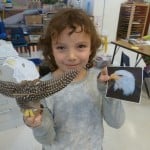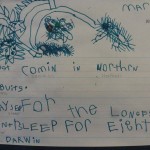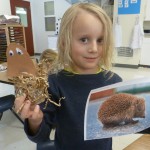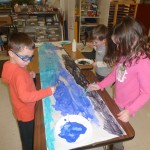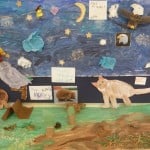During our walks to Bridgewalk Pond the class started a conversation about animals in the winter. How do animals find food in the winter? How do they stay warm? What happens to the fish and frogs when the pond freezes? These questions sparked an inquiry into our investigation of Animals in Winter.
A few favorite books we read were Owl Moon, Over and Under the Snow, Stranger in the Woods, and The Bear Snores On.
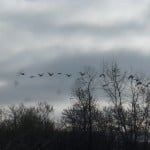

Animals can also adapt to the winter weather. Some grow thicker fur. Other animals gather extra food in the fall and store it to eat later. Weasels and snowshoe rabbits grow white fur to help them hide in the snow. To stay warm, some animals huddle together or build tunnels in the snow.
After a lot of investigation, we wanted to create a project to show what we learned and put it all together. The kinders divided into three groups: land, sky, and ocean. Each group was set to design a habitat and began planning together. Then, the groups painted their backgrounds and used a variety of collage materials to create their 3D habitat. We then created our own animals out of toilet paper tubes and other materials, added them to our habitats and labeled each with their species and what they do to survive the winter.



